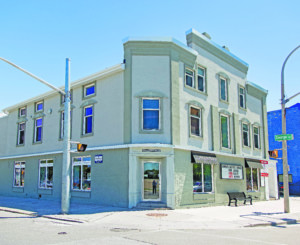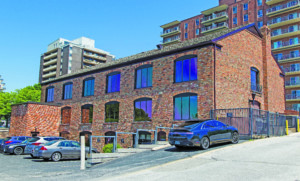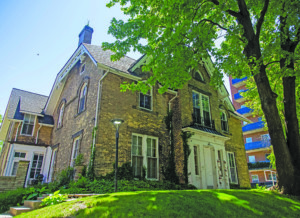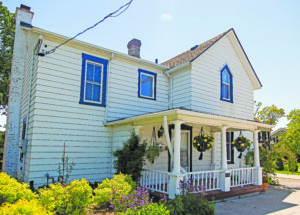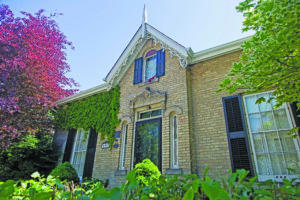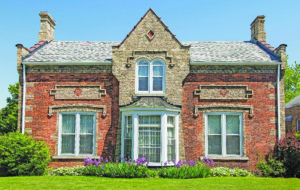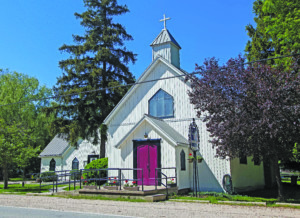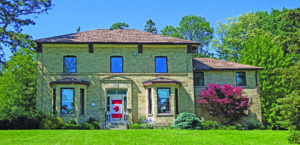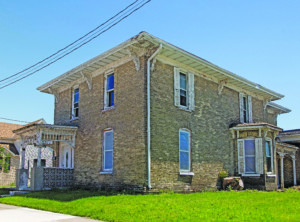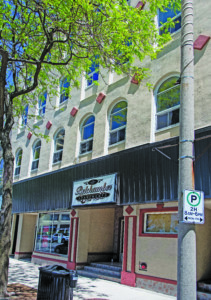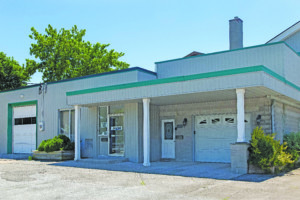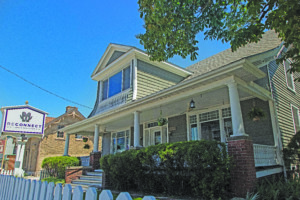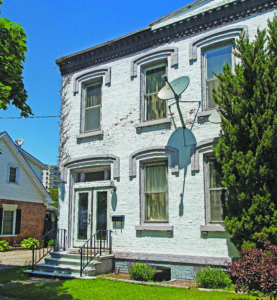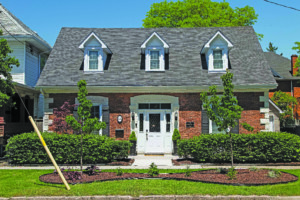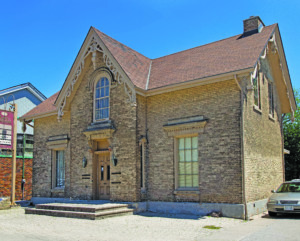
316 Christina St., built in 1861 by Alexander Mackenzie, Canada’s second prime minister, master builder and mason.
About 19 structures in our city — give or take — have managed to survive 150 years worth of fires, tornadoes and demolition orders.
Though relatively few in number, these pre-Confederation buildings offer a fascinating glimpse into what life was like in Sarnia in 1867.
“The citizens of Sarnia have respect for their community’s history and a lot of effort has been put into restoration,” says local historian John Rochon.
“Unfortunately, the city doesn’t have the same track record but there are numerous buildings that have been maintained.”
Some homes dating to 1867 or earlier remain architecturally significant, while others are lost within siding, additions and alterations, shrouding the secrets they bring from the past.
That’s true of the house at 103 Samuel Street, believed to be the oldest in Sarnia.
French settlers named the Cazelets built it in 1810 near what are now Front and George streets. It was a simple log cabin and, by the time of Confederation, had likely been moved to Johnston Street. Later, it was moved again to the corner of Confederation and Samuel where it stands today, its history hidden from view.
The early European settlers in Sarnia lived clustered near the St. Clair River.
Rochon says the town’s geography is revealed in a panoramic map dated 1867 that show’s a wide “birds-eye” view of Port Huron, Sarnia and Point Edward. (See page 8)
“It appears Sarnia stretched from the St. Clair to Mitton Street, just past Davis Street to the south and nearly to Exmouth Street to the north,” Rochon said.
“At Confederation, it was still pretty small, maybe 3,000 people or so, but it was a bustling place, a shipping centre with the railway already here and a lot of lumber and agricultural activity.”
Shops and hotels lined both sides of Front Street. The road was mud and the sidewalks wooden. Bridges spanned small creeks that interrupted the roadway.
Powering a sawmill on the waterfront was “Durand’s Ditch,” which ran beside George Street and carried water the river.
“A lot of people at that time came here in the summer to get the cooling breezes off the water,” explained Rochon. Consequently, a large number of hotels dotted Front and Christina Street in the 1860s.
The Belchamber Hotel at 178 Front Street N. was built to replace the Exchange Hotel, which was destroyed in the Great Fire of January 1866, which levelled parts of the downtown.
Eleven months later, James Belchamber opened the new four-storey hotel featuring white brick and a stone foundation. It loomed over other the downtown buildings, few of which rose above two stories.
Twenty years later, in 1887, the Belchamber underwent renovations that included Sarnia’s first elevator. That elevator is long gone and the Belchamber building today, minus its original iron balconies, is used as apartments and retail space.
Another former hotel that still exists is at the corner of Front and George. The Sarnia Hotel was built in the 1850s and was long a popular watering hole. It survives today as retail and residential space.
Settlers who didn’t live near the water had farmhouses a few blocks away on tracts of land they worked.
One early home that has survived was that of Froome Talfourd, a prominent Indian agent. Built around 1855, it was located on Front near Derby Lane and originally featured a widow’s walk. It was moved twice to make way for the extension of Front, once in 1875 and again in 1945 to 378 East St.
Local writer Charlotte Vidal Nisbet said the “prettiest cottage in the town” caused quite a sensation when it became stuck for several days as it was moved along Exmouth Street.
No official list of 1867 buildings in Sarnia exists, and the roster featured here was compiled with the assistance of some our community’s most active – and helpful – historians.
In addition to those featured in photos, surviving Confederation buildings include:
* 310 Christina St., built in 1856 and most recently a flower store;
* 316 Christina St., built in 1861 by Alexander Mackenzie, Canada’s second prime minister, master builder and mason;
* 322 Christina St., built in mid 1850s and home to Sarnia’s third mayor Henry Glass;
* 261 Christina St. North, cornerstone laid July 1, 1867 for St. Andrew’s Church;
* 199 Cromwell St., the Whiffen house built in 1864;
* 178 Front St. North, Belchamber Hotel built in 1866;
* 234 Front St. North, Old Western and Sarnia Hotel built in 1852;
* 301 Front St. North, built in 1862 as a brewery, later Silverwood’s Dairy;
* 2618 Hamilton Rd., now Bright’s Grove library built in 1855;
* 2896 Lakeshore Rd. St. John in the Wilderness Church, built in 1856;
* 269 London Rd., Gothic Revival style home built in 1860;
* 197 London Rd. known as Mulberry House, possibly built by Alexander Mackenzie in 1867;
* 361 London Rd. stately home built in 1860, now between two highrises;
* 112 Maria St., known as the Skilbeck cottage and first lending institution built in 1844;
* 118 Maria St., Sarnia’s first multiple unit dwelling built in 1860;
* 262 Vidal St. built in 1866 and now attached to St. George’s Church;
* 103 Samuel St., earliest log cabin known to still exist, built in 1810;
* 378 East St. North, the Talfourd cottage built on Front in 1855;
* 166 Brock St. North, hewn-log farmhouse built in 1867.


